
I love these super fun pillows! They’d be great for a child’s room, playroom, family room couch, or game room. I even attached some minifigures to a couple of the pillows so that it looks like they’re climbing gigantic Lego bricks.
You can make your own, and here’s the best part: the sewing pattern is COMPLETELY FREE!
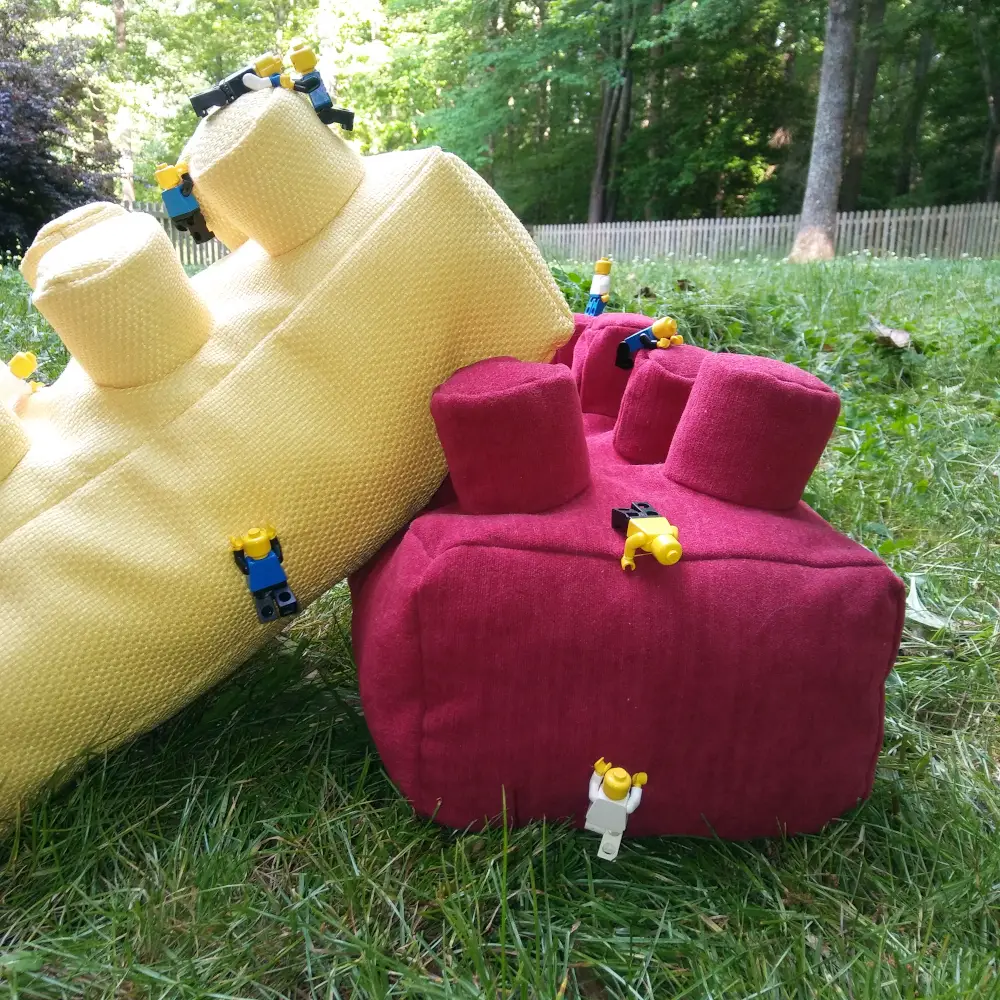

So here’s how to make this super fun craft:

I used this brand of polyester fiberfill to stuff my lego block pillows, and I put about 6 ounces in each pillow. So that bag in the link will be plenty, even if you stuff your pillows more full than I did.

You will need 3/4 yard of fabric if you choose a fabric that is 44″ wide, and 1/2 yard if your fabric is 60″ wide. It’s a really good idea to buy a little extra fabric, in case you make a mistake or cut where you shouldn’t. But if you’re feeling confident, those amounts are all you need. I recommend using a fairly thick, stable fabric that doesn’t want to unravel. Felt is a great choice, it’s very inexpensive, and you can even find felt that’s made of 100% recycled plastic bottles! It won’t unravel at all, and it’s very easy to cut and sew. Sometimes felt is sold by the square yard (36″ by 36″), and one square yard is plenty to make a lego block pillow.

You can also scout around your local fabric store for something like the upholstery fabric that I’m using for the demonstration. That particular fabric was just scrap pieces from an upholstery shop, and it’s a chunky yellow woven fabric that’s been bonded to a white knit fabric on the back side, so it really doesn’t fray. That makes it very easy to work with, since it sews like a woven but holds together like a knit, and you can clip the seam allowances on the curves without worrying too much about it coming unraveled. I used it for the demo because it was so easy to see which side was the wrong side in the pictures.
But you can use whatever woven fabric you want, if you iron a piece of fusible interfacing like this to the back of the fabric before you cut out your pattern pieces. The interfacing will stabilize the fabric and make it much easier to work with, just like the fabric I’m using in the pictures. The interfacing in the link above is plenty to make a lego block pillow.
I chose bright solid colors of fabric, to imitate the real Lego blocks I modeled these pillows after, but of course you can use whatever fabric you want. Using a drab or funky pattern might be kind of funny, now that I think about it.

Click on the PDF pattern above to download or print it. You will need to print out the pattern pages at 100% (no scaling), and cut on the dotted lines. The dotted line might stop just short of the edge of the paper, since your printer probably can’t print right up to the edge of the paper. But you are supposed to cut all the way to the edge of the paper in that case, just like I’m doing in the picture above.


The three largest pattern pieces are printed on two pieces of paper, so you will need to place the matching edges together (spirals to spirals, stars to stars, and circles to circles) and tape them together. Don’t overlap the pieces of paper, just butt them up next to each other and secure them with tape. (I’m using painter’s tape because it’s the answer to half of the world’s problems. No seriously, it’s because it’s so easy to reposition if I need to.)


The pictures above show you how to lay out your pattern pieces. The green fabric is demonstrating the layout for a 44″ fabric, and the red layout is for fabric that is 60″ wide.

Prewash your fabric, and if you’re using a fray-prone woven fabric, you should iron the fusible interfacing to the wrong side of your fabric before you cut out the pieces. Lay the pattern pieces on top of your fabric, with the straight edges of the pattern pieces lined up with the grainline of the fabric. The circles can’t be lined up on the grainline, so don’t even try.
If you’re using felt, just line the pieces up however they fit best. Felt doesn’t have a grainline to worry about.
All of the pieces are symmetrical, so you don’t need to worry about which side of the fabric is facing up when you cut the pieces out. You will need to cut out one bottom panel, one top panel, two side panels, two end panels, eight cylinder sides, and eight cylinder tops.




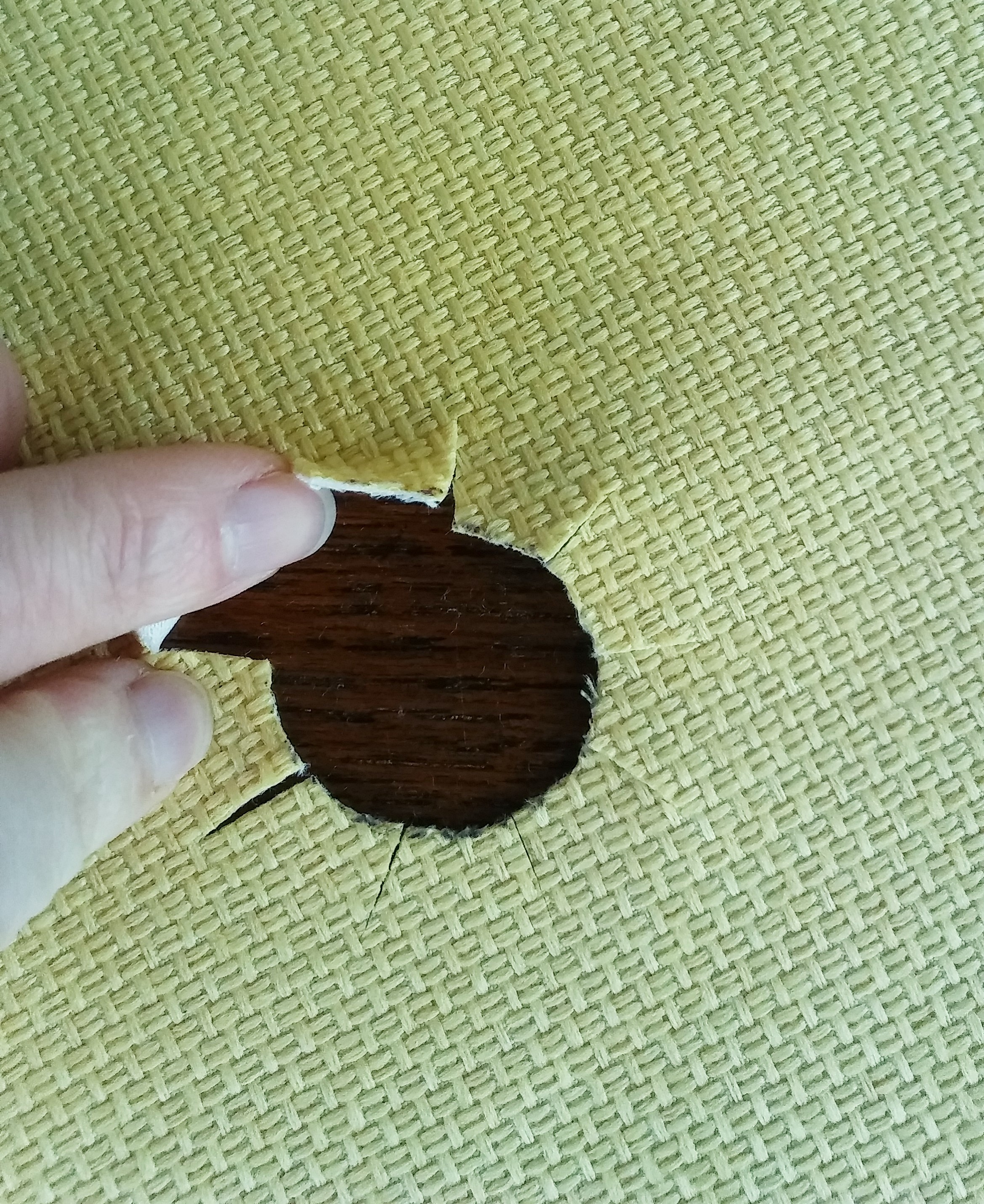
The top panel pattern has eight circles that you need to cut out and discard, and then trace around the holes onto the fabric. Cut the circles out of the fabric, and follow the dotted cutting lines to make snips all the way around the edge of the holes.

If you want to get technical, you only really NEED to cut two of the circles out of the paper, like it shows in that last picture, and then you can flip and rotate the paper piece to mark and cut the rest of the holes on the fabric. But I put all eight holes on the pattern piece just to make things easier.

You will also need to make cuts around the edges of the cylinder tops. Just follow the dotted lines on the pattern pieces, and make sure that you don’t cut the slits too deep, because then you won’t be able to close them up when you sew the seams.
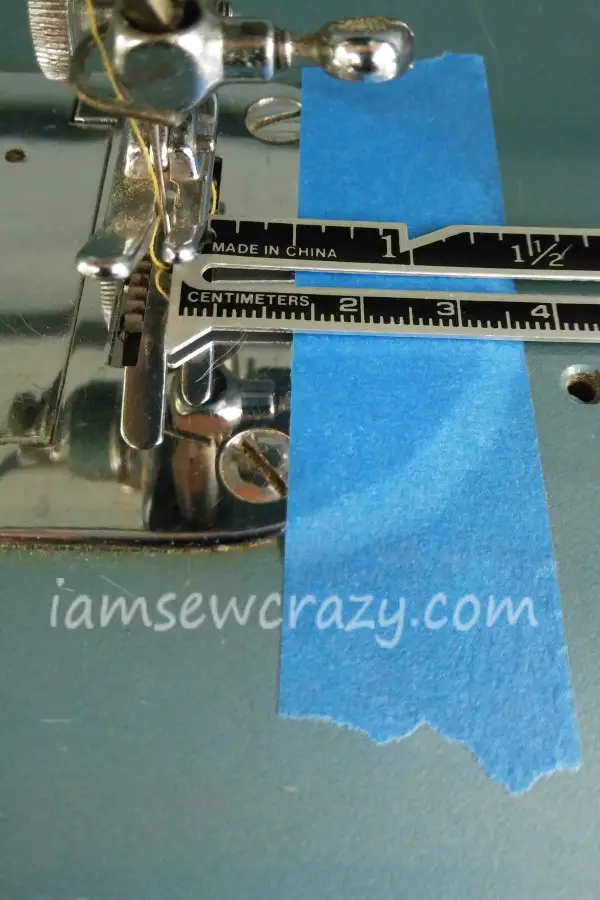
Every seam will be sewn with a 1/2″ seam allowance and a fairly short stitch length (I used 1.5 mm stitches, or 16 stitches to the inch.) If your machine is like mine and doesn’t have a mark on the throat plate for a 1/2″ seam allowance, just take a piece of painter’s tape and place it 1/2″ away from the needle to use as a guide. It won’t leave any residue, and will be easy to remove later.


Take one of the cylinder sides, and fold it in half, right sides together, so that the two short ends are meeting. Sew the short ends together, so that you have a tube.


You can stitch all eight cylinder sides one right after another, like I’m doing in the pictures. When you’re through, cut the pieces apart by snipping the threads that join them, and finger-press the seam allowances open.





Take one of the tubes you just sewed, and one of the circular pieces for the cylinder tops. Put the circle inside the tube, and line up the edge of one of the tabs with the edge of the tube. Pin the tab to the tube, and then go on to pin the next tab to the left. (P.S. Do you like my DIY magnetic pincushion? So do I! Click the link to see my tutorial and learn how to make your own!) The top of the tabs can overlap, and that’s fine, they’re supposed to overlap some. But make sure that everything is smooth 1/2″ away from the edge, where you will be sewing.
You don’t want to take a huge bite with the pin, like the arrows in the picture are showing. Just pin the tab, because if you pin the circle too far down, you won’t be able to line up the edges of the circle all the way around the tube. Work your way counter-clockwise around the tube, pinning the next tab to the left until the whole circle is attached.

You can hand-sew the cylinders if you really want to, but if you have a little extra fabric, you can use a few practice pieces to get the hang of stitching them on the machine. Place the cylinder under the presser foot, with the seam of the tube against the feed dogs so that you will sew over the seam first. (That’s because it’s easier to keep the tube’s seam allowances open if you sew over them first, instead of having the seam allowance flip over when you come around to them.) Now you can see why it’s better to pin the tabs to the left, because the tabs are overlapping in front of the needle so that you will sew over them smoothly, and not fight against them, like petting a cat backwards.
Sew all the way around, attaching the top of the cylinder to the tube. You will need to keep the heads of the pins on the highest edge of the cylinder out of the way of the sewing machine’s needle bar as you sew.

Clip and notch the seam allowances like this on all of the cylinders after you’ve sewn them, so that the curved edge will be smooth once you turn the cylinders right-side out. (You can see why you want to use a non-fraying fabric like a felt, or one that’s been stabilized with an interfacing. You don’t need to worry about your seam allowances being this narrow on a felt or similarly stable fabric.)


Now you can turn the cylinders right-side out and sew them into the top panel. You’ll pin the cylinder sides to the tabs on the top panel, lining them up just like before, except this time the tabs won’t overlap; there will be gaps in between the tabs as they spread apart to make room to attach the cylinder. Make sure that the pretty sides of the cylinder and top panel are facing each other, and turn the seam on the cylinder to the inside of the pillow so that it will be less visible when we’re done.

Double-check after you pin but before you sew, to be sure that the cylinder will be facing the right way and that everything looks good. Now sew (with that same 1/2″ seam allowance) all the way around the cylinder, starting with the seam allowance of the tube underneath the presser foot. You will need to hold the rest of the top panel out of the way to keep it from getting caught in the needle as you sew. Repeat for the other cylinders.


Now you can sew the side panels to the bottom panel. Place them right-sides together, with the long edges meeting. Sew the long edges together, but begin and end your seam 1/2″ from each end, just like it shows in the picture.
Sew the end panels to the bottom panel next, right-sides together as always, starting and stopping your seam 1/2″ from each edge. Line up the edges and keep the side panels out of the way of the needle.


Now you’re ready to sew the top panel to the rest of the pillow! It’s just like sewing the sides and ends to the bottom panel. Start and end each seam 1/2″ from the edge, and keep all the other pieces held out of the way so you don’t catch the wrong piece in your seam.
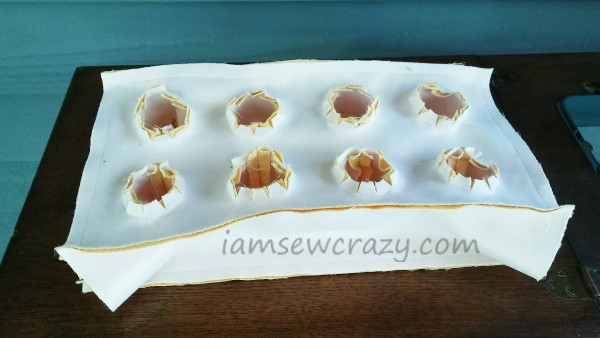
You should have something that looks like this: an inside-out lego block with four seams left unsewn (where the side panels meet the end panels.)


Sew three of the last four seams just like you have been doing, starting and stopping half an inch from the ends. The last seam, you need to leave an opening to turn the pillow right-side out and stuff it. It’s helpful to leave an opening large enough for your hand to fit inside, so that it’s easier to fill the cylinders, but it’s not essential. I always sew two very short seams at the ends, because sewing the corners on the machine gives me a head start when I hand-sew the opening closed. I colored in my seamlines with a pen so that you could see them easily in the last picture above.
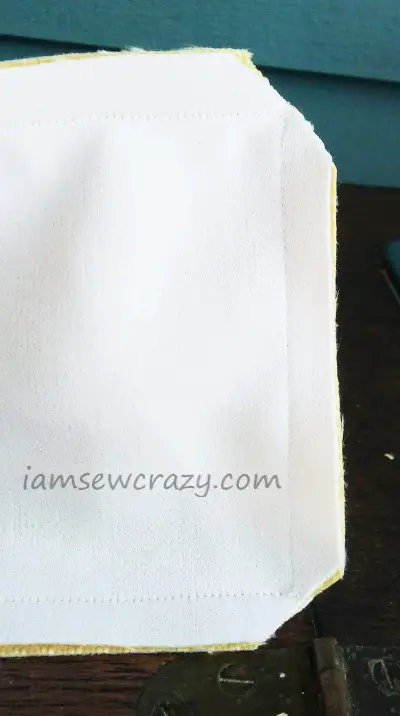

Clip the extra fabric away from all of the corners and around the circles of the top panel, being careful not to cut your stitches. Now you can turn your pillow right-side out and fill it with the fiberfill. I always stuff the cylinders first, because it’s easier to get them filled that way.
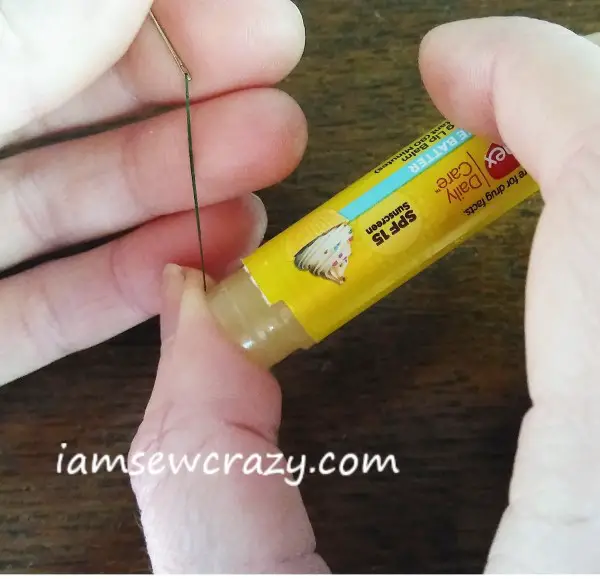
The very last thing you have to do is hand-sew the opening closed. Whenever you’re going to do some hand sewing, it helps to wax your thread to make it sew more smoothly and resist tangling. A lot of tailors use beeswax, and I normally do too, but if you don’t have any beeswax, you can run the thread through some lip balm. It works fine, and you probably already have it on hand. You don’t need very much at all, a thin coating will do the trick.


Take 4 small backstitches in the seam allowance to secure your thread, and then take a small stitch in one side of the opening, then the other, just like in the pictures. Try to stick with the 1/2″ seam allowance when you make your hand stitches. (You should use a thread that matches your pillow, of course I’m only using the dark green thread to make sure you can see it.) Keep your thread loose at first, and pull it tight when you’ve sewn an inch or so of the opening. Then continue on to sew the rest of the opening closed. When you’re done, secure your thread with 4 more little backstitches, and then bury the thread ends by using the eye of the needle to pull them to the inside of the pillow, never to be seen again.

And you’re done! You have an adorable pillow, perfect for a game room, den, or playroom. Pin this idea for later, share on Facebook, or send to a friend that you think would like it!

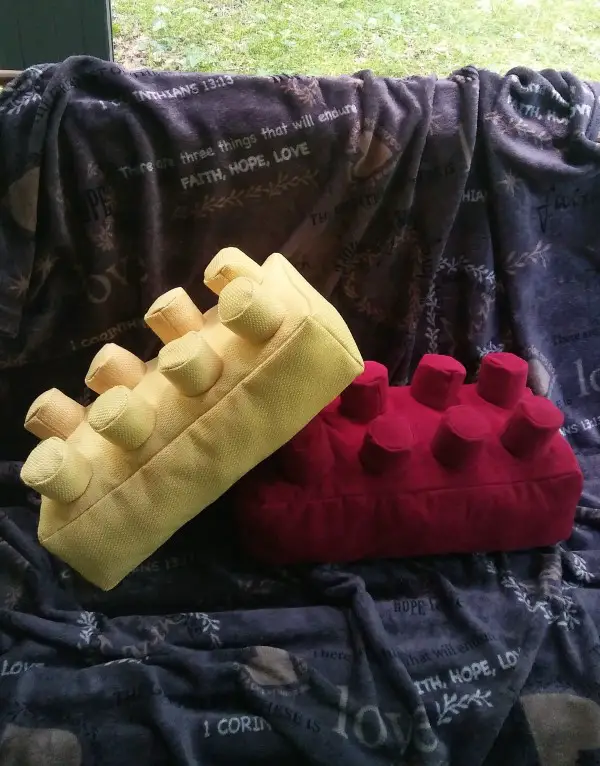

I subscribed to your newsletter. I did not receive the .pdf pattern for the Lego blocks and cannot figure out where to get the actual pattern to print so I can make these amazing blocks. Could you please send a copy of the pattern
Hi Lynn, the pattern may have gotten caught in your spam filter. I will be glad to re-send it!
I am a subscriber but only received the instructions – no pdf
Hi there! The welcome email should contain a link to the pattern as well as the instructions, but I know how spam folders can be, so I’ve re-sent the sewing pattern for you. Have a great day!
Thanks bunches!